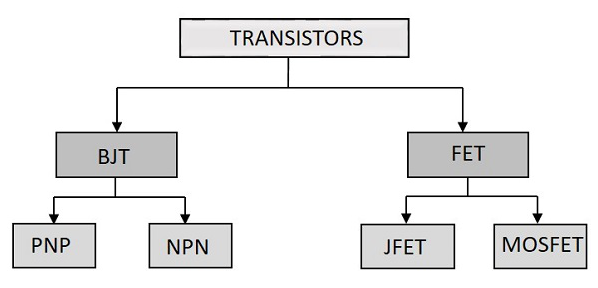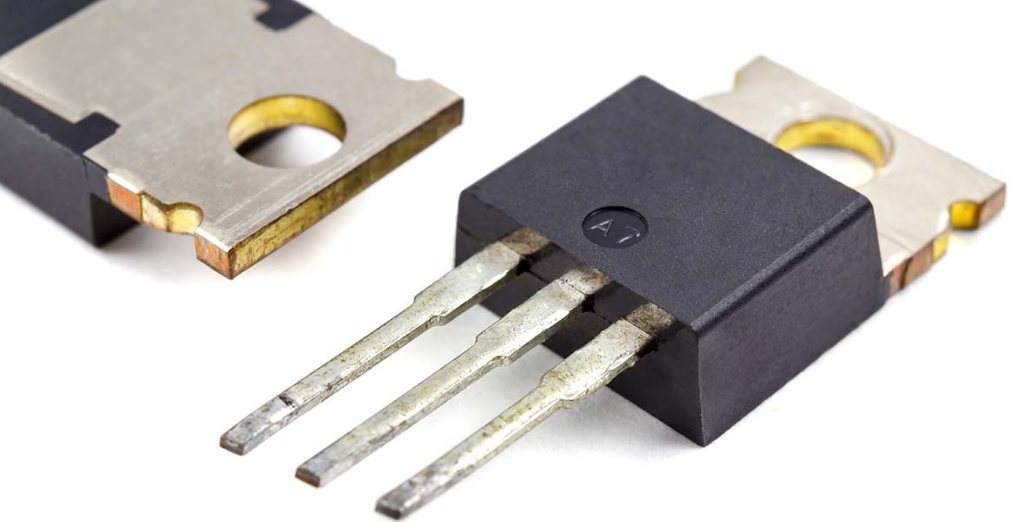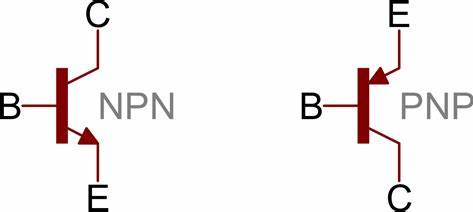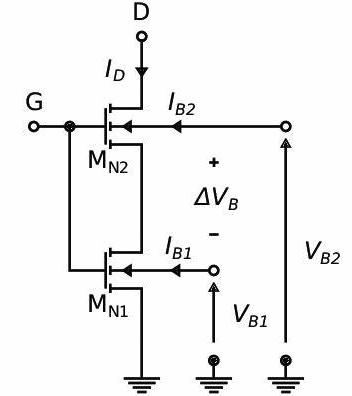Outline of a Transistor <Classification>
Transistors, the cornerstone of modern electronics, facilitate the control, amplification, and switching of electrical signals across a myriad of applications. These versatile components are classified based on several criteria that reflect their design, integration, and functionality, allowing for optimal selection and use in specific electronic environments. From managing minute currents in low-power devices to handling high-power applications for industrial machinery, transistors play an integral role.
This article explores the various classifications of transistors—by shape, construction, operation, permissible power, and type of integration—detailing their unique characteristics, operational dynamics, and practical implications in electronic circuit design. Understanding these classifications not only aids engineers and designers in component selection but also enhances the efficiency and performance of electronic devices, driving innovation in technology development.
Catalog

Figure 1: Types of Transistors
Classification by Shape
Transistor form factors determines both power management and installation methods. Transistors are mainly classified into two types: leaded and surface-mounted.
Leaded transistors are the traditional choice, featuring extended pins that are soldered into circuit boards. These are perfect for situations where there is plenty of space and where replacing components is a priority. The long leads make soldering and desoldering easier during repairs and modifications, which is especially useful in prototyping and maintenance-heavy environments.
On the other hand, surface-mounted transistors represent modern electronic design with their compact profiles that support the trend toward smaller devices. These transistors are mounted directly onto the surface of circuit boards, allowing for a more compact design and optimizing space in densely packed circuits. This mounting style improves electrical performance by reducing the path length for electrical signals and enhances heat dissipation through direct contact with the board. This helps maintain performance stability and extends the device's lifespan.
Classification According to Construction
Transistors are classified based on their internal structure and operational mechanisms into two main types: Bipolar Junction Transistors (BJT) and Field Effect Transistors (FET). Each type serves different applications due to their unique characteristics.
Bipolar Junction Transistors (BJT)

Figure 2: BJT Structure
BJTs operate using both electrons and holes, earning the "bipolar" designation. These transistors are built with alternating layers of P-type and N-type semiconductor materials, creating two PN junctions. They have three terminals: Emitter (E), Base (B), and Collector (C), and come in two configurations: NPN and PNP. In a BJT, a small current injected into the base terminal controls a larger current flowing from the emitter to the collector. This allows BJTs to function in three distinct regions:
• Cut-off Region: The transistor is non-conductive
• Active Region: The transistor amplifies signals
• Saturation Region: The transistor is fully conductive, acting as a switch
BJTs' precise control over these regions, along with the direct relationship between input and output currents, makes them ideal for applications like audio amplification and digital switching systems.
Field Effect Transistors (FET)
Unlike BJTs, FETs control electrical conductivity through an electric field applied to a semiconductor channel, which makes them more efficient in voltage-sensitive environments. FETs include Junction FETs (JFETs), Metal-Oxide-Semiconductor FETs (MOSFETs), and Metal-Semiconductor FETs (MESFETs).
Known for their high input impedance, JFETs are primarily used in analog circuits. MOSFETs is common in digital circuits, favored for their fast-switching capabilities and high integration capacity. It makes them perfect for compact electronic devices.

Figure 3: Field Effect Transistor
On the other hand, MESFETs is designed for high-frequency applications. It is ideal in environments requiring robust performance at extreme frequencies, such as microwave communications and radar systems. This categorization allows for precise selection of FETs to meet specific electrical and operational needs, ensuring optimal performance and efficiency in circuit designs.
Classification According to Operation
Transistors regulate electrical flow within circuits, much like valves in a plumbing system. Their operation adapts to their design and the specific requirements of their application.

Figure 4: NPN and PNP Transistor
• NPN Transistor Operation
NPN transistors facilitate the easy flow of electrons from the emitter to the collector, requiring only a small voltage at the base to initiate this movement. Applying voltage to the base 'opens' the transistor, allowing electricity to pass through. Removing the voltage 'closes' it, stopping the flow. This on-off capability is highly tunable, providing precise control over the electrical current.
Technicians often use NPN transistors for precise adjustments during circuit testing and troubleshooting. They are widely used in applications requiring meticulous control of current flow, such as variable speed drives, automated control systems, and responsive electronic switching.
• PNP Transistor Operation
PNP transistors use holes (the absence of electrons) as charge carriers. The applied voltage at the base inversely controls the flow of holes from the emitter to the collector. Applying a negative voltage to the base 'opens' the transistor, allowing current to flow. A lack of voltage or a positive voltage ‘close’ it, preventing current passage.
These transistors are used in designs where conventional current flow (from positive to negative) needs inversion. They are commonly utilized in complementary logic circuits and charge pump circuits, enhancing the flexibility and efficiency of power management in various electronic systems.
Classification According to Permissible Power
Transistors are categorized based on their power handling capabilities, making them suitable for different applications.
Small Signal Transistors
Small signal transistors amplify weak electrical signals while operating under low-power conditions. These transistors handle minor currents and operate at higher frequencies, making them ideal for precise electronic signaling. They are used in consumer electronics to drive LEDs and relays or amplify signals in audio devices, ensuring weak audio inputs are processed without distortion.
Small Switching Transistors
Small switching transistors are designed for rapid switching tasks and can also amplify signals. They support a wide range of hFE (current gain) values, offering versatile performance and swift responsiveness. Popular in digital circuits and communication systems, these transistors are appreciated for their adaptability in various electronic configurations, from consumer gadgets to industrial controls.
Power Transistors
Power transistors are built to handle substantial power levels. These transistors manage significant currents and voltages, typically reinforced with heat sinks to mitigate thermal buildup, enhancing durability and performance stability. Used in high-power applications like audio amplification and voltage regulation in power supplies. Power transistors are suitable for systems requiring robust energy handling without compromising efficiency.
High Frequency Transistors
High frequency transistors are tailored for operations demanding extremely high speeds. They maximize frequency response capabilities, making them suitable for RF and microwave communication systems. Valued in telecommunications and signal processing equipment, these transistors ensure precise high-speed signal handling for optimal functionality and preventing system failure.
Photo Transistors
Photo transistors are activated by light rather than electrical input. These devices convert light intensity directly into electrical signals. Common in safety and automation systems, photo transistors are used to create responsive, light-sensitive applications ranging from simple light-activated alarms to complex industrial optical sensors.
Uni-Junction Transistors (UJT)
Uni-junction transistors are designed solely for switching operations, with no amplification function. Their simplicity makes them reliable and straightforward switches. Ideal for triggering mechanisms in electronic appliances, UJTs are invaluable in specific industrial applications where a reliable switch is needed.
Classification According to the Type of Integration
Transistors are categorized based on their integration into circuits, ranging from single units to more complex configurations.
Discrete transistors are individual units and are fundamental to circuit design and prototyping. These transistors are packaged individually, offering high versatility and easy replaceability. Despite the shift towards integrated circuits (ICs), discrete transistors are used where high customization or modifications are needed during circuit development and testing. They provide technicians with precise control over each component's behavior.
Composite transistors consist of multiple bipolar junction transistors combined to achieve higher current gains. These assemblies handle higher power loads that single transistors cannot manage. They are used in power-intensive settings such as automotive controllers and power regulation systems. Composite transistors allow for a compact circuit layout while boosting performance, making them a favorite among engineers for advanced electronics.

Figure 5: Improved Composite Transistor
Digital transistors integrate built-in resistors with standard bipolar transistors. This integration reduces the number of components in a circuit, enhancing reliability and speed. Ideal for microprocessor interfaces and digital logic applications that requires space and speed. Digital transistors simplify designs, leading to quicker design cycles and improved performance in digital devices.
Conclusion
The classification of transistors serves as a fundamental guide for the development and implementation of electronic systems, providing a structured approach to selecting the right components for specific applications. Whether it's choosing a simple discrete transistor for basic circuit building or opting for a composite transistor for high-current applications, the understanding of these categories ensures that designers can make informed decisions that optimize the functionality and reliability of their products. Furthermore, the evolution from traditional leaded models to advanced digital and integrated configurations highlights the progressive nature of semiconductor technology, reflecting ongoing advancements in miniaturization and integration that continue to push the boundaries of what electronic devices can achieve. Ultimately, the detailed exploration of transistor classifications not only enriches the toolkit of engineers and developers but also catalyzes innovation in designing more efficient, powerful, and compact electronic systems.
Frequently Asked Questions [FAQ]
1. What is a Transistor Outline?
A transistor outline refers to the physical and functional design specification of a transistor, including its shape, size, pin configuration, and mounting type. This outline is useful for engineers and technicians as it dictates how the transistor fits into a circuit board and interacts with other components. For instance, a common transistor outline might specify whether the transistor is a TO-220 package, which is a typical size and shape used for power transistors with three leads and a tab for heat sinking. Understanding the transistor outline helps in selecting the correct transistor type for specific circuit designs and ensuring proper installation.
2. What are the Parts of a Transistor?
A transistor generally consists of three main parts. The region from which carriers (electrons or holes) are emitted. In operation, the emitter is heavily doped to facilitate the flow of charge carriers. The middle, thin, lightly doped region that controls the transistor's operation. It acts as a gate for carriers moving from the emitter to the collector. The region that collects carriers from the base. It is typically larger and less heavily doped compared to the emitter to handle the higher voltages and collect the majority of the charge carriers. These parts are integral to a transistor’s function, well-known in its ability to amplify or switch electronic signals.
3. What are the Characteristics of a Transistor?
Ability to amplify a small input current into a larger output current. The rate at which a transistor can turn on and off, important for digital applications. Characteristics that determine how a transistor will interact with other components in a circuit. Determines the maximum voltage and power the transistor can manage without failing. These characteristics define a transistor’s suitability for various applications, such as amplifying signals in audio equipment or switching currents in computing devices.
4. What is Component Classification?
Component classification in electronics involves categorizing components based on their functions and properties. This classification helps in organizing inventory, designing circuits, and troubleshooting. Components are broadly classified into active components such as transistors and integrated circuits, which require a power source to operate and can introduce gain or switch currents. Passive Components such as resistors, capacitors, and inductors, which do not require a power source and cannot introduce gain. Electromechanical Components including switches, relays, and connectors, which combine mechanical and electrical functions.
5. Why is a Transistor Classified as a Switch?
A transistor is classified as a switch because of its ability to control the flow of electrical current in a circuit. In its simplest form, a transistor can be driven between saturation (fully on) and cutoff (fully off) states, effectively functioning as a binary switch. This capability is fundamental in digital electronics, where transistors are used to switch on and off repeatedly at high speeds, enabling the binary logic operations of modern computers and other digital devices. The ability to switch rapidly and reliably is one of the key attributes that make transistors essential in electronic design and automation technology.